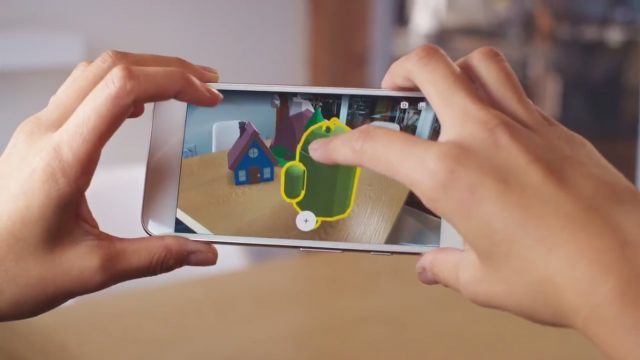In an answer to Apple’s recently released ARKit, a developer tool used for making augmented reality apps and games that run on newer iPad and iPhones, Google today released a preview of a new Android-compatible software development kit (SDK) called ARCore.
Google prides itself on its stewardship of Android, the largest mobile platform in the world with over 80 percent of the mobile market share in 2016, according to research and advisory firm Gartner. Drawing from their work developing Tango, the company’s older AR platform that works with only two publicly available devices—Lenovo Phab 2 Pro and Asus Zenfone—Google is opening up their new ARCore SDK to run on “millions of devices,” initially supporting both the Pixel line and Samsung S8 line, running 7.0 Nougat and above.
Google is currently working with Samsung, Huawei, LG, ASUS and unnamed others, saying they’ll be targeting “100 million devices at the end of the preview.” The company hasn’t said specifically when the end of preview access will occur however.
[gfycat data_id=”EnviousCrispAlbacoretuna”]
The company outlines the ARCore’s three main abilities:
- Motion tracking: Using the phone’s camera to observe feature points in the room and IMU sensor data, ARCore determines both the position and orientation (pose) of the phone as it moves. Virtual objects remain accurately placed.
- Environmental understanding: It’s common for AR objects to be placed on a floor or a table. ARCore can detect horizontal surfaces using the same feature points it uses for motion tracking.
- Light estimation: ARCore observes the ambient light in the environment and makes it possible for developers to light virtual objects in ways that match their surroundings, making their appearance even more realistic.
Including support for projects created in Java/OpenGL, Unity and Unreal Engine, Google is also releasing prototype AR web browsers, which allow developers to create AR-enhanced websites that can run on both Android’s ARCore and Apple’s iOS/ARKit.
Google calls ARCore their “next step in bringing AR to everyone,” but says more information will be coming out later this year.
ARCore, saddled with what Google’s learned from creating Tango’s recently teased Visual Positioning Service (VPS), the inside-out tracking system which hooks into Google Maps, could mean some wild things for current and future Android devices. We’ll be keeping our eyes out for all things Google, so check back for more updates on what could become one of the world’s largest AR platforms in short order.
In the meantime, check out some of these cool projects created with ARCore.


